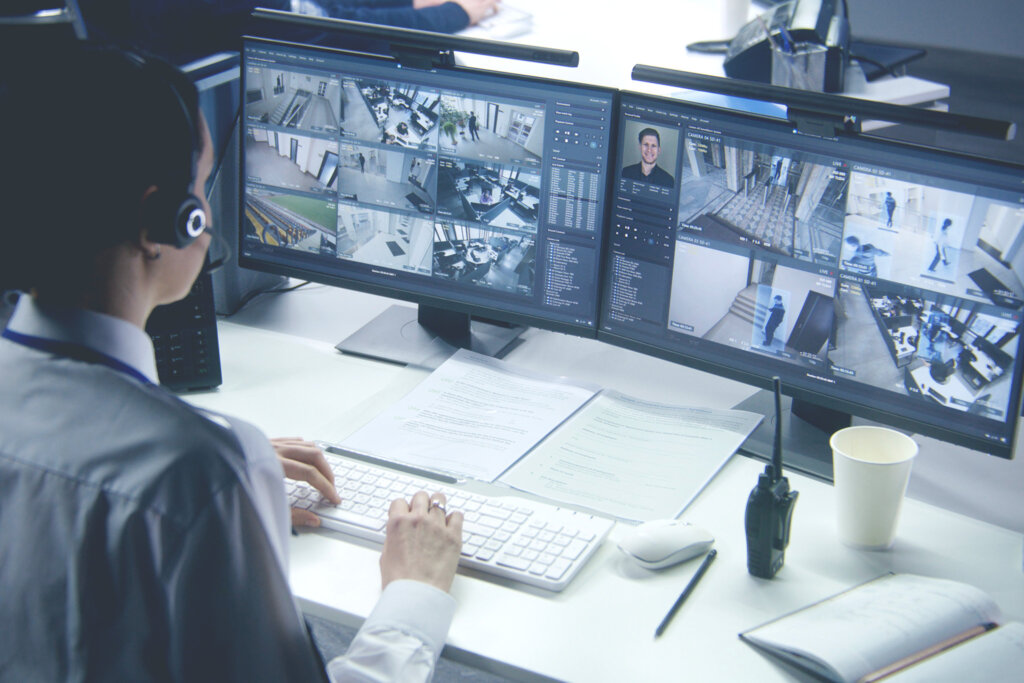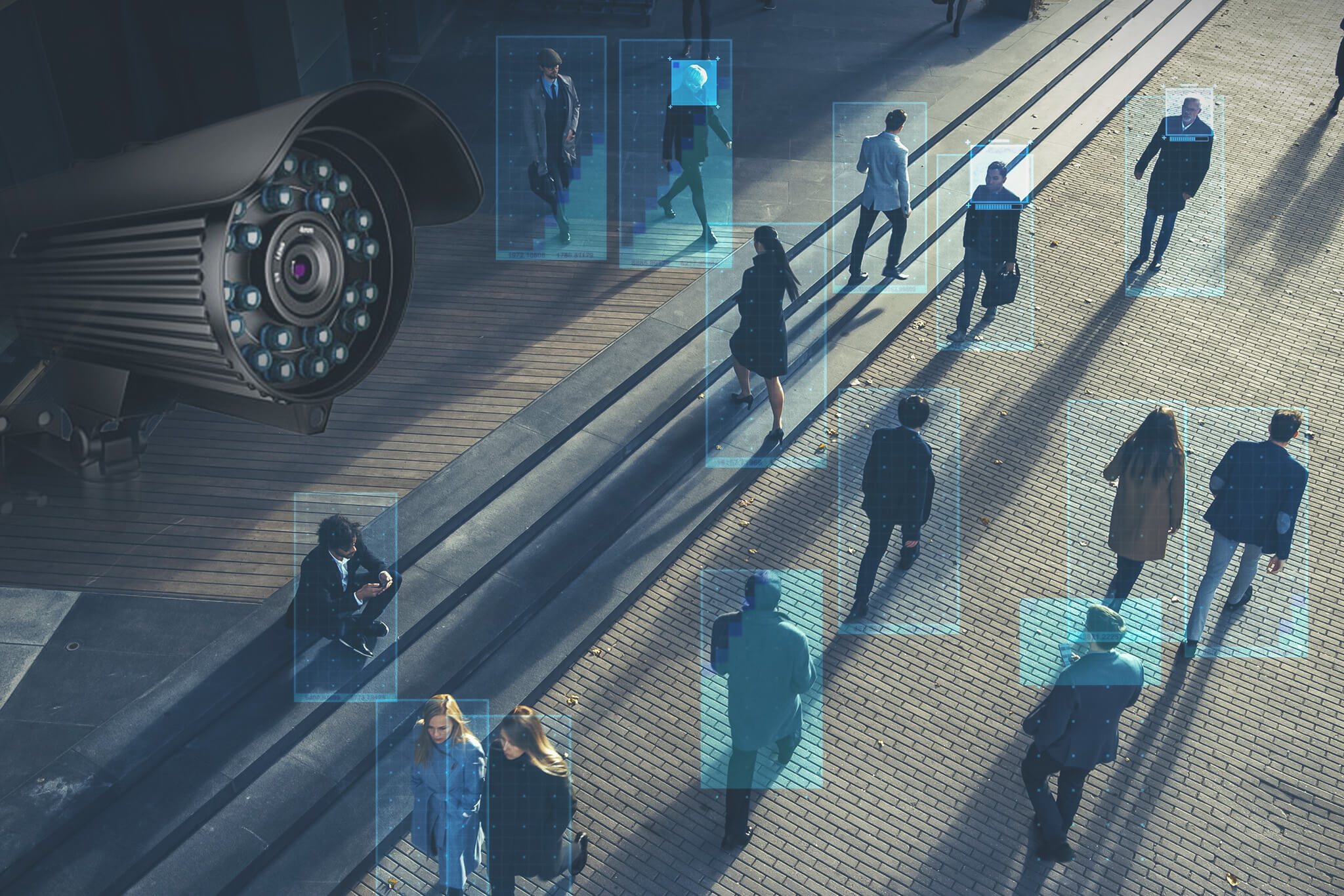From Reactive to Proactive: AI’s Role in Neutralizing Security Threats
Artificial intelligence (AI) is reshaping industries across the globe, and the security sector is no exception. As criminal activities grow more complex, AI security solutions have become essential for security teams, enabling them to not only respond but also anticipate and neutralize threats before they occur. This represents a significant shift from traditional security methods.
In the past, crime prevention primarily relied on human intervention. Private security personnel and companies like ADT were the first to respond, reacting to alarms triggered by motion sensors or other systems. While somewhat effective, these methods were limited by their reactive nature and human constraints.
The introduction of video security systems marked a major advancement. Instead of relying solely on physical patrols, security teams could monitor live video feeds from a central station. However, with multiple feeds on one screen, critical details could easily be missed. Even when potential threats were identified, someone still had to manually verify them by reviewing footage or inspecting the site.
Artificial Intelligence in Crime Detection
Remote guarding works by seamlessly integrating with existing security camera systems. These cameras act as eyes, continuously observing the environment to detect any hints of possible threats. Picture this: when a thief breaks into a property or someone brandishes a firearm in a public space, the remote surveillance system detects these dangers within seconds. An alert is then sent to a central command center, and local law enforcement is dispatched to stop the crime.
The Role of Real-Time AI Video Analytics
Today, AI is changing the game in security. By combining real time analysis with predictive powers, AI systems can closely monitor video feeds, quickly spot any suspicious activities, and alert security teams right away. This technology gives human operators a major boost, helping them work more efficiently.
When AI works alongside security guards, it helps them solve problems more effectively by providing information that optimizes their performance, reducing response times and false positives. In fact, Actuate’s software can reduce a control room’s false positives by as much as 95%. This is because our AI excels at distinguishing real threats from harmless situations and can even identify a weapon before it is used.
AI Systems for Improved Security Effectiveness
1. Enhanced Intruder Detection
Security systems that leverage AI can identify patterns and detect subtle anomalies in real time. Unlike traditional systems that rely solely on motion sensors or basic video analytics, an AI model can quickly analyze vast amounts of surveillance data, pinpointing irregularities that might easily escape the human eye.
For example, AI can spot unusual behaviors, such as someone entering a restricted area or lingering in an area that typically sees no activity. By continuously monitoring these patterns, AI instantly alerts security teams to potential intrusions, enabling a swift and targeted response that minimizes the risk of unauthorized access.
2. Proactive Measures for Threat Prevention
AI’s predictive capabilities are instrumental in enhancing physical security by forecasting potential vulnerabilities in real time. Instead of waiting for an incident to happen, AI security solutions anticipate and neutralize security threats before they can materialize.
For example, an AI model can analyze patterns of movement and behavior across surveillance footage to identify signs of unauthorized access or suspicious activities, such as loitering or unusual crowd formations. By detecting these early warning signals, AI allows security teams to intervene proactively, preventing potential security threats.
3. Automated Incident Response
In the event of a security incident, AI can automate responses with remarkable speed and precision, significantly reducing the time between threat detection and action. These AI systems can be programmed to initiate predetermined responses, such as locking down a facility, sounding alarms, or even notifying law enforcement agencies.
AI continuously learns and adapts, improving its responses over time. By using real time crime data, AI can dynamically adjust security measures—either escalating the response as a confirmed threat or de-escalating when it is a false alarm. This adaptability ensures that security teams are always equipped to handle security incidents efficiently.
Understanding the Technologies Powering AI Security Solutions
Computer Vision: AI uses computer vision to analyze video feeds in real time, allowing for fast response times and lowering the risk of security incidents.
Neural Networks: Inspired by the human brain, neural networks give an AI model the ability to identify patterns and subtle nuances within data making them particularly adept at behavior analytics.
Machine Learning: AI systems get better over time through a process called machine learning. By tapping into vast amounts of data, AI security solutions can become better at predicting and preventing incidents over time.
The Advantages of AI-Driven Security Solutions
Cost Efficiency
By reducing the need for large security teams and minimizing the risk of human error, AI helps lower operational costs without compromising safety.
Scalability
AI systems can monitor multiple sites simultaneously, making them ideal for remote guarding and remote site security.
Enhanced Accuracy
One of the key benefits of AI is its ability to improve the accuracy of intruder detection systems and reduce false positives.
Proactive Threat Management
By identifying and addressing potential threats in real time, AI helps prevent incidents before they escalate, providing a significant boost to security effectiveness.
Case Study: Actuate’s Impact on Genesis Security Services
In 2020, Genesis Security Services faced a challenge with false positive alerts impacting their operations. Enter Actuate’s AI security solutions: The real time detection capabilities minimized downtime and provided the team with actionable insights through a user-friendly dashboard. The final result? Actuate’s AI-driven solutions significantly reduced their false positives by 97%, bolstering accuracy and reducing operational costs.
The Future of Security with AI
AI-driven solutions are becoming an essential component of security systems and will continue to significantly impact security capabilities, transforming it from reactive to proactive. Actuate AI is at the forefront of this change, providing innovative solutions that create safer and more secure environments. Our AI solutions offer meaningful, disruptive, and innovative technology that makes a massive difference.
For more information on how these integrations can enhance your security setup, visit: https://actuate.ai/




